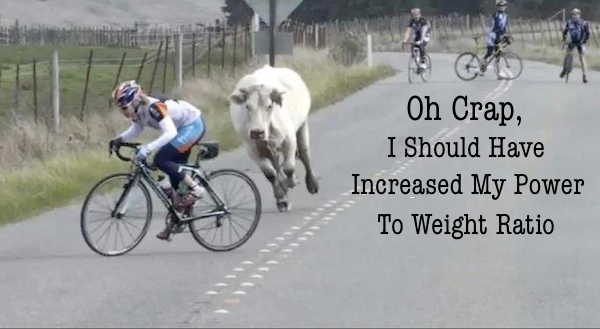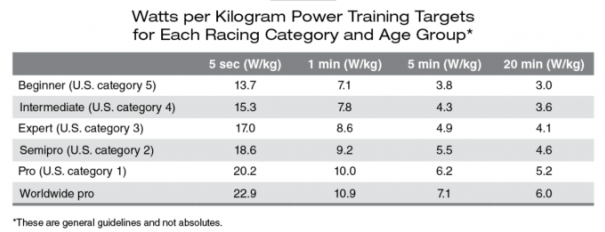Comparing Power To Weight Ratio
 Cycling is a dynamic activity, and the amount of work being done by your muscles varies throughout a ride. You can get a good idea of your power output by tracking it with a power meter. Power meters have steadily been growing in popularity among cyclists. They are a way to get a picture of your effort in real time, so you can adjust the intensity of your ride to fit your training purposes.
Cycling is a dynamic activity, and the amount of work being done by your muscles varies throughout a ride. You can get a good idea of your power output by tracking it with a power meter. Power meters have steadily been growing in popularity among cyclists. They are a way to get a picture of your effort in real time, so you can adjust the intensity of your ride to fit your training purposes.
Power, the rate at which you utilize energy over time, is measured in watts. Your power output can be influenced by a number of factors, including your weight. For this reason, it’s often useful to talk about power output per kilogram of body weight, or watts per kg. This number is called the power to weight ratio, and is an objective number that you can use to compare your performance to that of fellow athletes or more importantly the Pros.
Depending on experience level, cyclists can produce vastly different power to weight ratios. The chart below is intended to give you a rough idea of the performance differences between the average professional, amateur, and recreational cyclist.
How Does Your Power to Weight Ratio Compare to the Pros
Power to Weight Ratio for Cyclists of Varying Experience Levels (Watts per kilogram)*


The power to weight ratio a cyclist is capable of producing will naturally depend on his or her training, as will the length of time for which a certain level of effort can be sustained. A professional cyclist may average 6 watts per kilogram over an hour ride, for instance, while a recreational cyclist will only be able to sustain that level for 1 minutes (or less).
To improve your numbers and make the most of your power meter training, it’s essential to calculate your threshold power. Functional threshold power (FTP) is a measure of the power output a cyclist is able to sustain for one hour. It’s determined by a series of full-effort time trials carried out after a proper warm-up. Once you’ve determined your FTP, you can use it to customize a training routine that best suits your needs. There are a number of training guides available, both online and in print, that will guide you through the process of utilizing your power meter to maximize your workout.
A power meter can improve your riding efficiency and help you become a stronger rider. It’s important not to allow the numbers to dictate your training, however. Not every ride will be a power ride, but that doesn’t mean it was a wasted effort. Listen to your body, and take care not to push yourself too hard. A power meter can be a great tool and, used wisely, it will allow you to achieve the strength and balance that every rider strives for. It is also the easiest way to compare yourself accurately with other riders!